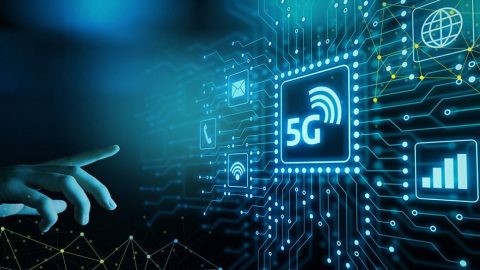
The connected revolution is constantly expanding its influence in many different fields, from production, trade, services to administrative organizations. Accordingly, 5G technology applications are gradually asserting their role anywhere.
What are the advantages of 5G?
The numbers say it all: 5G networks can handle 1,000 times more data than 4G networks, connect to more than 100 times more devices per square kilometer, and data transfer speeds are also high. 100 times faster than 4G. Besides, 5G is also a network with high flexibility and versatility. 5G can meet the need for connectivity for enhanced mobile broadband (eMBB), mass machine type communications mMTC and low latency communications – high reliability ( ultra-reliable and low-latency communications – URLLC).
eMBB provides data transmission with extremely high speed, average download speed of about 10Gbps, 100 times the single carrier speed of LTE network. eMBB uses advanced techniques such as wider bandwidth (2GHz), new frequencies in high frequency (millimeter waves) and uses a combination of licensed bands to improve its transceiver capabilities. The advent of eMBB is good news for media companies wishing to stream ultra-high definition video streaming (UHD). In a large space such as a stadium, stage or plaza where many individuals access to view one content at a time, eMMB will be a useful tool to provide a stable access portal with high quality.
URLLC features the most outstanding 5G technology: Low latency. This is the foundation that paves the way for the application of digital duplication solutions (maintenance solutions and remote monitoring solutions), Cobots (Robots working with humans) and connecting self-driving cars, etc. With a delay of only about 1 millisecond and high stability, remote control of machines in real time will no longer be an unreliable option. Imagine in the case of a doctor performing remote surgery with a robot connected via wireless link, then the reliability and stability of the transmission line is the success of the surgery. On the other hand, this also helps to minimize workers’ accident risks and increase labor productivity.
Finally, mMTC, which uses less than 1 GHz bandwidth to provide connectivity between machines and machines on a large scale (M2M). The use of mMTC also provides a solid foundation for businesses to use the Internet of Things smoothly. Hundreds of devices installed sensors in the factory will be constantly connected to the data processing center via 5G network. With high accuracy and stable data transmission, the updated data from the sensor will be processed in a timely manner for management purposes. This technology is also often used to build smart cities, connecting communication between traffic lights, autos and highways to control traffic.
We will continue to learn about other advantages of 5G technology later in the article.
Productivity and Quality Office